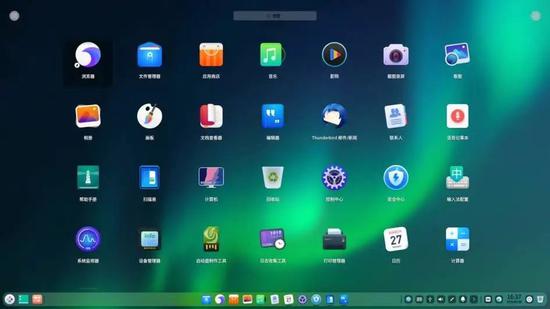Linux Tcp通信——服务器与客户端
摘要:int err = bind(sockServer, (struct sockaddr *)&addr, sizeof(addr))。#include dir。
点击上方蓝字可直接关注!方便下次阅读。如果对你有帮助,麻烦点个在看或点个赞,感谢~
最近因为新换了工作,文章没有及时更新,还望大家见谅。
之前一直想做linux+qt方向的,然而现在变成嵌入式软件方向了。其实也还好吧,这样就需要对底层的一些东西了解,目前是智能交通行业了。还不知道美国这次对华为动手会对这些用芯片的行业造成多大影响 ......
再啰嗦几句,现在平均每天快10点到住的地方,所剩精力已经不咋多了;所以想对整个时间进行优化调整,一切都还在适应中 ~
程序平台与环境:ubuntu16.04 64位、 c 语言、
Eclipse编辑器、 makefile 文件编译 ( 非 cmake 进行编译 )
一、Tcp Server 源程序
程序特点:
①只能接受一个客户端连接
②可实现客户端断开后循环监听客户端连接
③启用端口复用,即 kill 掉之后不会显示端口被占用
④打印客户端连接地址
思考:
①如何发送结构体数据?
②如何封装自己的 c 语言 socket 通信模块?
③不清空接收缓存会有什么效果呢?
1. 服务器程序源码:
#include <stdio.h>
#include <stdlib.h>
#include <sys/socket.h>
#include <sys/types.h>
#include <netinet/in.h>
#include <errno.h>
#include <string.h>
#include <arpa/inet.h>
#include <unistd.h>
#define SERVERPORT 8000
#define MAXLIN 4096
int main(void)
{
int sockServer = -1;
int connfd = -1;
struct sockaddr_in addrClient; //client addr
//01 create socket
sockServer = socket(AF_INET, SOCK_STREAM, 0);
//check is success
if (sockServer < 0)
{
printf("create socket server faild!\n");
return -1;
}
else
{
printf("create socket server success!\n");
}
//02 init server, fullfill sockaddr_in
struct sockaddr_in addr;
bzero(&addr, sizeof(addr));
addr.sin_family = AF_INET;
addr.sin_port = htons(SERVERPORT);
addr.sin_addr.s_addr = htonl(INADDR_ANY) ;// receive data from any ip
//设置该端口可复用
socklen_t buflen = 1;
socklen_t len = sizeof(buflen);
setsockopt(sockServer, SOL_SOCKET, SO_REUSEADDR, &buflen,len);
//03 bind socket
int err = bind(sockServer, (struct sockaddr *)&addr, sizeof(addr));
if (err < 0)
{
printf("bind() called failed!\n");
return -1;
}
else
{
printf("bind() called success! \n");
}
//04 set the socket to listen mode, ready to receive client requests
if(listen(sockServer, 5) < 0)
{
printf("listen() called failed!\n");
return -1;
}
else
{
printf("listen() called successful!\n");
}
socklen_t sin_size = sizeof(struct sockaddr_in);
const int nTempLen = 4096;
char *recvbuf = (char *)malloc((size_t)nTempLen);
while(1)
{
printf("wait client connecting ......\n");
connfd = accept(sockServer,
(struct sockaddr *)&(addrClient),
&sin_size);
printf(" client connect success !!! ip is: %s \n",(inet_ntoa)(addrClient.sin_addr));
while(connfd) //modify TcpServerRecv
{
//取实际收到的数据长度
int nRecv = recv(connfd, recvbuf, nTempLen, 0);
printf("recv size is %d \n",nRecv);
if(nRecv <=0 && errno != EINTR)
{
printf(" client disconnect !\n" );
break;
}
if(nRecv > 1)
{
printf("%s \n",recvbuf);
if(send(connfd,recvbuf,nTempLen,0)<0)
{
printf("send msg error :%s(errno:%d)\n",strerror(errno),errno);
}
}
memset(recvbuf, 0, strlen(recvbuf));
}
}
puts("!!!Hello World!!!"); /* prints !!!Hello World!!! */
return EXIT_SUCCESS;
}
2. Makefile文件模板
Makefile文件还没有深入研究
使用前进入到Makefile文件所在目录下,最好先 make clean ,然后 make
之前对cmake简单研究过,嵌入式开发用的还是更原始一些,用的 make; 还有就是写脚本指定的都是 bash ,现在指定的是 sh~
APP_DIR = .
#include dir
INC_DIR = $(APP_DIR)/include
# libs dir
LIBS_DIR = $(APP_DIR)/libs
#LDFLAGS += -L$(LIBS_DIR) -
################################################################################
# Build config
################################################################################
# Comment/uncomment the following line to disable/enable debugging
DEBUG = n
ifeq ($(DEBUG),y)
# "-O" is needed to expand inlines
EXTRA_CFLAGS += -O -g -DDEBUG
else
EXTRA_CFLAGS += -O2
endif
#APP_DIR = $(CURDIR)
APP_BIN = $(APP_DIR)/myserver
LDFLAGS += -lpthread
# test dir
#TEST_DIR = $(APP_DIR)/test/
LIBS += $(Libs)
#EXTRA_CFLAGS +=-I INC_DIR
EXTRA_CFLAGS += -I$(INC_DIR)
EXTRA_CFLAGS += -I$(MSGFRAME_DIR)
CFLAGS +=-Wall -MD
EXTRA_CFLAGS += -I. -lpthread
################################################################################
# Build Rules
################################################################################
#CC = $(CROSS_COMPILE)gcc
all: $(APP_BIN)
SRCS_Comm = myServer.c
OBJS_Comm = $(SRCS_Comm:.c=.o)
$(APP_BIN) : $(OBJS_Comm)
$(CC) $(CFLAGS) $(OBJS_Comm) -o $@ $(LDFLAGS)
%.o: %.c
$(CC) $(CFLAGS) $(EXTRA_CFLAGS) $(INCLUDE) -c $< -o $@
clean:
@rm -rf $(APP_BIN) $(OBJS_Comm) $(APP_DIR)/*.d $(APP_DIR)/Unit/*.d
二、Tcp Client源程序
程序特点:
①通过读取标准输入获取发送字符串,点击回车进行发送
②对是否成功连接到 server 进行判断
注意:
未包含#include <sys/socket.h>该头文件会有下面的警告:
prevent implicit declaration of function ‘inet_addr’ [-Wimplicit-function-declaration]
#include <stdio.h>
#include <stdlib.h>
#include <sys/socket.h>
//prevent implicit declaration of function ‘inet_addr’ [-Wimplicit-function-declaration]
#include <arpa/inet.h>
#include <netinet/in.h>
#include <unistd.h>
#include <string.h>
#include <fcntl.h>
#include <sys/shm.h>
#define PORT 8000
//#define SERV "192.168.23.1"
#define SERV "127.0.0.1"
#define BUFF 1024
int main(void)
{
// 定义socket
int sockfd = socket(AF_INET,SOCK_STREAM,0);
// 定义sockaddr_in
struct sockaddr_in skaddr;
skaddr.sin_family = AF_INET;
skaddr.sin_port = htons(PORT);
skaddr.sin_addr.s_addr = inet_addr(SERV);
if( connect(sockfd,(struct sockaddr *)&skaddr, sizeof(skaddr)) < 0 )
{
printf("connect error \n");
exit(1);
}
printf("connect server success !!! \n");
char sendbuf[BUFF];
while( fgets(sendbuf, sizeof(sendbuf), stdin) != NULL )
{
send(sockfd, sendbuf, strlen(sendbuf), 0);
if( strcmp(sendbuf,"exit\n") == 0)
{
break;
}
}
close(sockfd);
puts("!!!Hello World!!!"); /* prints !!!Hello World!!! */
return EXIT_SUCCESS;
}
三、程序效果
应该是公司电脑加密问题无法上传图片。
四、小结
以后Qt研究的可能会少了,但是不会放弃的。
以后通信安全方面知识的学习会多一些,也会和大家做一些分享的。
学习和生活相似却又不同,不过都需要不断总结规律,让其习以为常成为习惯!
学习就像:看山是山,看山不是山,看山还是山!
公众号后台留言可获取整个文件。














